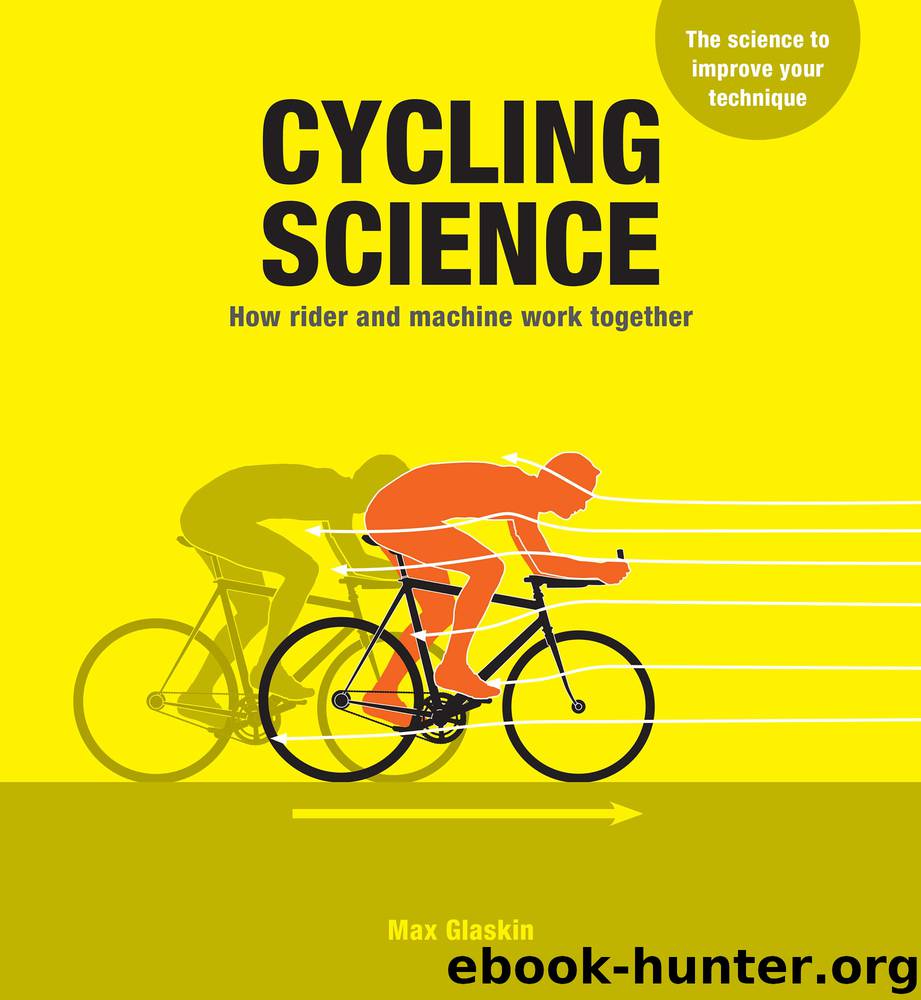Cycling Science by Max Glaskin

Author:Max Glaskin
Language: eng
Format: epub
Publisher: Ivy Press
Published: 2019-03-19T16:00:00+00:00
equipment: the wheel
The bicycle wheel is such an obvious and essential component of the machine that it is easy to overlook what a remarkable feat of mechanical engineering it is. The modern bicycle wheel is one of the strongest of all man-made constructions, able to support approximately 400 times its own weight. It is also capable of absorbing stresses in several different planes—radially, from the weight of the rider and the consequent upward pressure of the road surface; laterally, from sideways pressure as the rider leans into a bend or stands up on the pedals for extra power; and torsionally, from the torque exerted by the chain as it drives the wheel forward. The history of bicycle wheel development reveals a process of finding ways to make lighter and lighter wheels without compromising the necessary strength.
The first wheels—hubs, spokes, and rims—were made entirely of wood, like cart wheels. Rims continued to be made of wood well into the twentieth century, particularly for racing bikes, which would have rims made from strips of laminated hardwood. The development in the 1870s of High Wheeler bicycles, sometimes called “Penny-Farthings” or “Ordinaries,” led to the use of steel spokes to reduce the weight of the wheels.
At first, steel spokes were connected radially from the hub to the rim, but later wheels connected them tangentially, meaning that the spokes run out at an angle from the hub and cross over each other. This configuration is more efficient in transmitting the rotational motion of the hub to the wheel rim. Tangential spokes also resist deformation of the wheel under stress. The immense strength of the bicycle wheel comes from the tension under which the rim is held by the spokes.
The spokes are not acting as columns to support the rim, which becomes obvious if you remove a spoke and note how easily it can be bent. Spokes have little compressive strength, but they do have immense tensile strength. It is virtually impossible to stretch a spoke, and this is the key to the spoked wheel’s rigidity. The spokes are pulling the rim toward the hub; the whole structure is in tension, so it resists deformation.
Lighter materials such as aluminum, carbon fiber, and Kevlar are now commonly used by designers working for competitive teams, and racing wheels often have deeper rims, with a V section instead of the more familiar shallow U. There are wheels with spokes that span the diameter of the wheel and bend around the axle so as to avoid the stress fracture point where the spoke attaches to the hub. Everything is geared toward reducing weight while retaining rigidity.
Download
This site does not store any files on its server. We only index and link to content provided by other sites. Please contact the content providers to delete copyright contents if any and email us, we'll remove relevant links or contents immediately.
Shoe Dog by Phil Knight(5220)
The Rules Do Not Apply by Ariel Levy(4911)
Walking by Henry David Thoreau(3925)
How to Read Water: Clues and Patterns from Puddles to the Sea (Natural Navigation) by Tristan Gooley(3434)
Running Barefoot by Amy Harmon(3418)
I'll Give You the Sun by Jandy Nelson(3395)
Crazy Is My Superpower by A.J. Mendez Brooks(3360)
How to Read Nature by Tristan Gooley(3294)
How Music Works by David Byrne(3234)
The Boy, the Mole, the Fox and the Horse by Charlie Mackesy(3067)
The Fight by Norman Mailer(2889)
Seducing Cinderella by Gina L. Maxwell(2618)
Cuba by Lonely Planet(2603)
Accepted by Pat Patterson(2337)
Going Long by Editors of Runner's World(2327)
The Unfettered Mind: Writings from a Zen Master to a Master Swordsman by Takuan Soho(2274)
The Happy Runner by David Roche(2214)
Backpacker the Complete Guide to Backpacking by Backpacker Magazine(2213)
Trail Magic by Trevelyan Quest Edwards & Hazel Edwards(2145)
